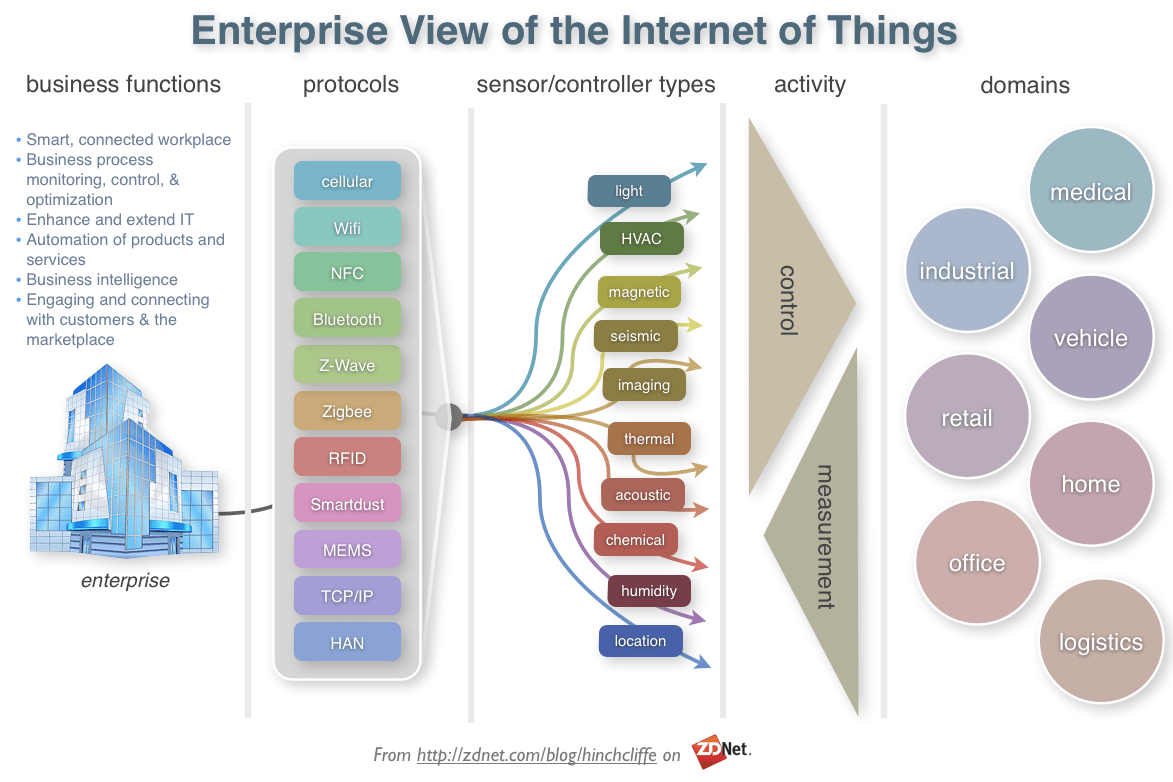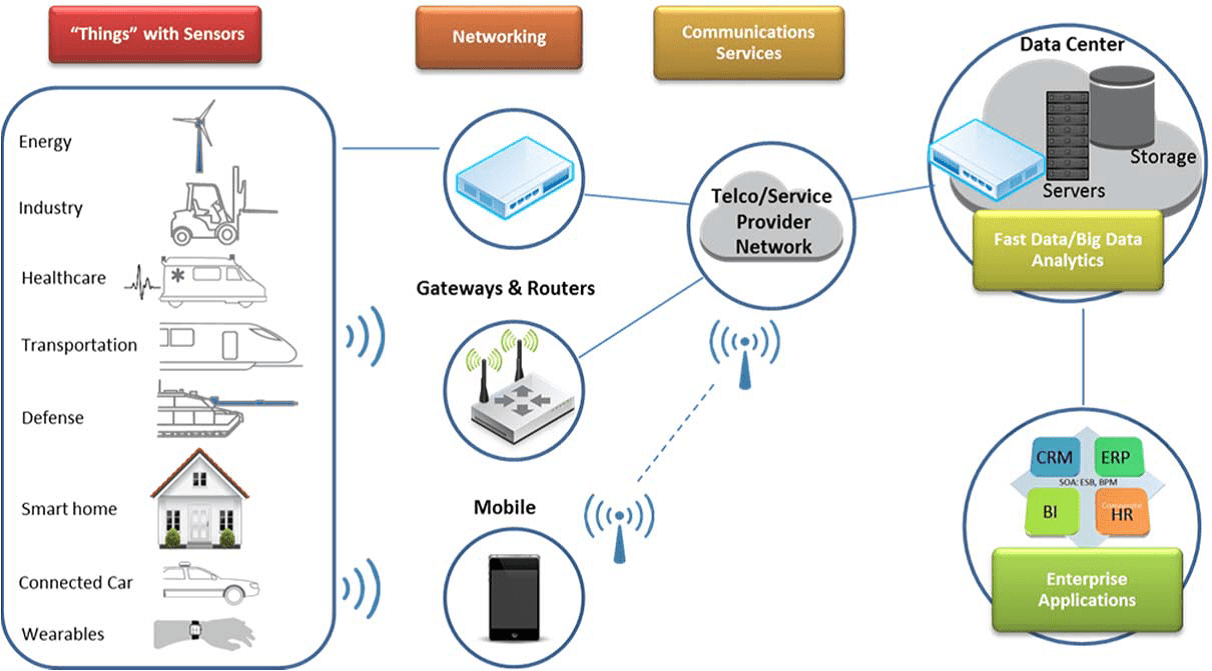Sensors have been used in different industries for varied purposes for a long time now. However, IoT (Internet of Things) solutions created a need for the next generation sensors; loaded with features to solve the modern-day automation challenges.
The IoT sensors are smarter and have the capability to communicate with other sensors and remote computers as well.
The paradigm of connected things has made sure that industries are able to work intelligently with an enormous amount of data being collected by the IoT sensors.
As data is at the crux of an industrial IoT setup, the role of sensors is imperative to making the entire ecosystem smarter. The industrial IoT solutions are being developed keeping the huge inflow of data in mind.

Big strides in material technology have ensured that the sensors are more accurate, low on cost, power requirements and of reduced size. As most industrial IoT applications are far from the control centre, the sensors needs to have a very low power footprint.
They are now able to collect a variety of data thus enabling the industries to work with enhanced efficiency.
The IoT sensor market is going to touch $9900 Mn mark by the year 2026, according to a report by Persistence Market Research. The figure clearly indicates how the industrial IoT solutions are poised to bring about a substantial change in industrial automation.
This blog is an attempt to shed light on some of the most used sensors in the industrial automation application of the Internet of Things.

Types of IoT Sensors Required for an Industrial Automation Solution
- Smoke Sensors: They have been in use for a long time but their integration with the IOT industrial automation solutions has created some interesting use-cases.
These sensors find widespread use in applications like HVAC, construction site monitoring and the industrial units where a chance of fire and gas leakage is on a higher side.
When smoke sensors are integrated with an industrial IoT solution, even the slightest leakage of gas or minor occurrence of fire can be reported to the concerned team and major disaster can be averted.
Companies like Heiman and Nest Protect manufacture smart IoT smoke sensors for both home and industry applications. These Zigbee or WiFi enabled sensors cost anything between $2 to $10 depending on the quality.
- Proximity Sensors: As the name suggests, these sensors measure the distance from itself and the nearest object. They are most commonly found on the car bumpers to alert the drivers in the case of an imminent collision.
Proximity sensors also find application in the retail industry where the customer is informed about the discount as he or she walks near a product.
Other use cases are assembly lines of different industries like food, chemical, machine tools and many others.
- Infrared Sensors: Infrared sensors are essentially used to detect human presence.
Infrared sensors have been deployed for Military applications extensively but over the few years, IR sensors integrated with the industrial IoT solution are finding applications in other industries as well.
As these sensors can detect any infrared radiation including heat, they are deployed in electronics, chemical, and healthcare industries to name a few.
Asahi Kasei Microdevices (AKM), Murata, Melexis MLX90614, Intersil ISL29021 are among the few IOT IR sensors used in Industries.
- Piezo Sensors: The piezo sensors measure pressure and when integrated with an IoT solution can send data related to pressure changes in real time.
Using these sensors, we can develop an industrial IoT system that is capable of monitoring pressure in pressure-critical equipments such as boilers, water systems, aerospace, oil drilling systems and more.
Pressure Systems Series 960, 970, Paroscientific Inc. Series 1000, 2000, 6000, Environdata BP10 Series are some of the most commonly used pressure sensors in industrial IoT applications.
- Temperature Sensors: Temperature sensors are among the most widely used sensors in industrial IoT applications.
They find their use-cases in numerous industries that include FMCG, pharmaceuticals, biotechnology, and others where temperature-monitoring is crucial.
Melexis MLX90614, Environdata TA40 Series, Geokon 4700 are the top picks for temperature sensors in industrial IoT applications.
- Optical Sensors: Optical sensors are one of those sensors that are capable of sensing more than just light.
The underlying technology of these sensors lets it monitor any kind of electromagnetic radiation, i.e. light, electricity, and a magnetic field etc.
Telecom, elevators, construction, healthcare, safety systems are some of the Industrial automation applications of Optical Sensors.
Vishay’s VCNL4020X01 and TCxT1600X01 are optical sensors designed specifically for the industrial IoT applications.
- Image Sensors: Image sensing has the power to revolutionize industrial automation in lot of industries like healthcare, transportation, and more.
When integrated with the Internet of Things (IoT) enabled system, these sensors can help in monitoring of hospitals, factories, and more.
These sensors can measure blood pressure with every beat, read the variation in pressure over the entire day and help in the prevention of cardiovascular diseases.
In the transport sector, image sensors can help prevent train collision by alerting the driver of an approaching train on the same track..
Omron and Invisage are two pioneers who are implementing the image sensing technologies in IoT with great outcomes.
These are not all. Many other sensors are being popularly deployed in industrial IoT solutions and a good number of them, capable of measuring other parameters, are in the process of development. IoT is undoubtedly the future of industrial automation and its potential will largely depend on how effective, efficient and smart the sensors are.
One can easily imagine the prowess of IoT when the sensors will be able to collect and analyze the data that is still untapped.
Are you ready to automate your industrial operations with industrial IoT solutions? To know more about our IoT Development Services contact our IoT Consultants to book a free session to discuss how IoT solution can improve your industrial unit

